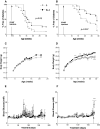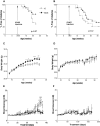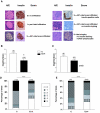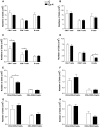Exendin-4 modulates diabetes onset in nonobese diabetic mice
- PMID: 18063685
- PMCID: PMC2275367
- DOI: 10.1210/en.2007-1137
Exendin-4 modulates diabetes onset in nonobese diabetic mice
Abstract
Activation of the glucagon-like peptide-1 receptor (GLP-1R) is associated with expansion of beta-cell mass due to stimulation of cell proliferation and induction of antiapoptotic pathways coupled to beta-cell survival. Although the GLP-1R agonist Exenatide (exendin-4) is currently being evaluated in subjects with type 1 diabetes, there is little information available about the efficacy of GLP-1R activation for prevention of experimental type 1 diabetes. We examined the consequences of exendin-4 (Ex-4) administration (100 ng once daily and 2 microg twice daily) on diabetes onset in nonobese diabetic mice beginning at either 4 or 9 wk of age prior to the onset of diabetes. Ex-4 treatment for 26 wk (2 microg twice daily) initiated at 4 wk of age delayed the onset of diabetes (P = 0.007). Ex-4-treated mice also exhibited a significant reduction in insulitis scores, enhanced beta-cell mass, and improved glucose tolerance. Although GLP-1R mRNA transcripts were detected in spleen, thymus, and lymph nodes from nonobese diabetic mice, Ex-4 treatment was not associated with significant changes in the numbers of CD4+ or CD8+ T cells or B cells in the spleen. However, Ex-4 treatment resulted in an increase in the number of CD4+ and CD8+ T cells in the lymph nodes and a reduction in the numbers of CD4+CD25+Foxp3+ regulatory T cells in the thymus but not in lymph nodes. These findings demonstrate that sustained GLP-1R activation in the absence of concomitant immune intervention may be associated with modest but significant delay in diabetes onset in a murine model of type 1 diabetes.
Figures








References
-
- Baggio LL, Drucker DJ 2006 Therapeutic approaches to preserve islet mass in type 2 diabetes. Annu Rev Med 57:265–281 - PubMed
-
- Shapiro AM, Ricordi C, Hering BJ, Auchincloss H, Lindblad R, Robertson RP, Secchi A, Brendel MD, Berney T, Brennan DC, Cagliero E, Alejandro R, Ryan EA, DiMercurio B, Morel P, Polonsky KS, Reems JA, Bretzel RG, Bertuzzi F, Froud T, Kandaswamy R, Sutherland DE, Eisenbarth G, Segal M, Preiksaitis J, Korbutt GS, Barton FB, Viviano L, Seyfert-Margolis V, Bluestone J, Lakey JR 2006 International trial of the Edmonton protocol for islet transplantation. N Engl J Med 355:1318–1330 - PubMed
-
- Drucker DJ, Nauck MA 2006 The incretin system: glucagon-like peptide-1 receptor agonists and dipeptidyl peptidase-4 inhibitors in type 2 diabetes. Lancet 368:1696–1705 - PubMed
-
- Xu G, Stoffers DA, Habener JF, Bonner-Weir S 1999 Exendin-4 stimulates both β-cell replication and neogenesis, resulting in increased β-cell mass and improved glucose tolerance in diabetic rats. Diabetes 48:2270–2276 - PubMed
-
- Stoffers DA, Kieffer TJ, Hussain MA, Drucker DJ, Egan JM, Bonner-Weir S, Habener JF 2000 Insulinotropic glucagon-like peptide-1 agonists stimulate expression of homeodomain protein IDX-1 and increase β-cell mass in mouse pancreas. Diabetes 49:741–748 - PubMed
Publication types
MeSH terms
Substances
LinkOut - more resources
Full Text Sources
Other Literature Sources
Medical
Research Materials

